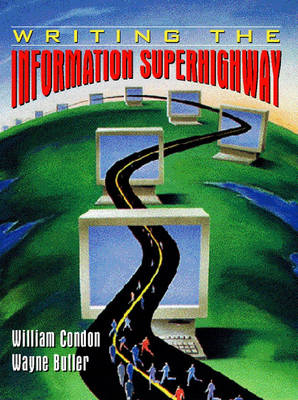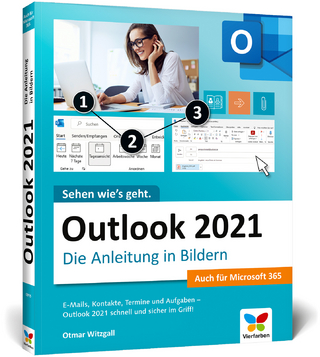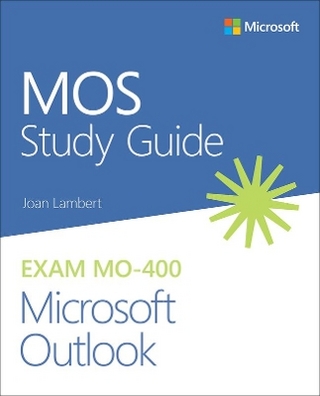
Writing the Information Superhighway
Pearson (Verlag)
978-0-205-19575-6 (ISBN)
- Titel ist leider vergriffen;
keine Neuauflage - Artikel merken
Writing the Information Superhighway is the first text intended for composition courses that shows students how to read and write using the modes and resources available on the Internet. The text is designed to acquaint students with the wide variety of information available via computer networks, with the tools for accessing that information, with the means for searching and selecting, as well as with the traditional ways of putting that information to use in serving the writer's purpose and in addressing the writer's audience.
The book focuses on activities that predominate in cyberspace — manipulating text, communicating one on one, communicating in groups, finding and using resources, and constructing texts online. The overall movement of the book involves students and teachers in an exploration of academic literacies and invites them to consider how those literacies change as the technology of the classroom changes and students begin working online. Students are encouraged to use online resources and are involved in increasingly complex opportunities to write about what they are learning as they develop cyber-literacy.
The book employs numerous writing to learn, narrative, analysis, and argumentation writing projects that lead students through the various stages of the writing process — invention, drafting, peer editing, and electronic publication. The writing projects, embedded into a collaborative learning context, help students learn together not only about the tools of the Internet and how to use those tools as writers, but also as a way to build a learning community, to develop criteria for successful writing (both in traditional and electronic modes), and to explore the social, political, legal, and economic issues particular to Cyberspace. A chapter on writing in the disciplines offers suggestions and activities for using the Internet to write across the curriculum.
Preface.
The Purpose of the Book: Bridging Gaps.
Transformations in Educational Settings.
Transformations in Technology.
The Third Wave of Writing Education.
About the Structure of This Book.
I. PRODUCING AND ACCESSING DIGITAL TEXTS.
An Introduction to Computer-Aided Writing Activities and the Tools that Facilitate Them.
Activity: Internet Literacy Inventory.
1. Manipulating Text.
Word Processing.
Composing Editing Final Editing: Ensuring Correctness Formatting and Printing.
2. Communicating on the Internet: One on One.
Moving Beyond the Desktop: Stepping into Cyberspace.
Activity 1: Getting Started: Scavenging for Directions.
One-on-One E-mail: The Rhetoric of the Screen.
Activity 2: Invention Activity 3: Peer Review Activity 4: Collaborative Writing.
3. Communicating on the Internet: Accessing Virtual Communities.
Asynchronous Communities.
Mail lists Bulletin Board Services (BBS) Usenet Groups.
Synchronous Communities.
Accessing Synchronous Communities.
MUDs, MOOs, and MUSHes: Virtual Reality without the Goggles.
4. Gathering Information on the Internet: Reaching Out and Bringing Back Resources.
The Docuverse, Part One.
File Transfer Protocol (FTP).
Activity 1: The Different Part Activity 2: The Uniform Part.
Wide Area Information Servers (WAIS).
Gopher.
World Wide Web (WWW).
Activity 1: Getting Started on the WWW Activity 2: Searches.
5. Constructing Texts On-line.
The Docuverse, Part Two.
Background: Change is constant (and fast!).
Composing on the Web: The Basics.
The Effects of Links Activity: Your Own Homepage.
II. WRITING PROJECTS FOR THE INFORMATION AGE.
6. Assessing Writing.
Overview.
Goals and Objectives.
Self-Assessment.
Process Guidelines for Self-Assessment Consultation.
Community Standards.
Authority-Centered Assessment.
Looking Ahead.
7. Building Community On-Line.
Project 1: Building Community through Computer Mediated Communications.
Overview.
Goals and Objectives.
Technological Requirements.
Participant Prerequisites.
Activity 1: Assigning Keypals Activity 2: Composing Mail Activity 3: Responding to E-mail Activity 4: Face to Face Introductions.
Project 2: Documenting the Local Landscape.
Overview.
Goals and Objectives.
The Assignment.
Technological Requirements.
Activity 1: What Every Person Needs to Know about Our Town Option 1: Oral Brainstorming Option 2: Brainstorming On-line Activity 2: The Scavenger Hunt: Tips On Scavenging Activity 3: Writing the Handout Activity 4: Revising the Handout Activity 5: Sharing the Handouts.
8. Tales of Cyberspace.
Overview.
Features of Narrative.
Project 3: Tales of Cyberspace.
The Assignment.
Goals and Objectives.
Technological Requirements.
Activity 1: Finding Places to Begin Activity 2: Embarking on Your Journey of Cyberspace Activity 3: Drafting Your Narrative Activity 4: Getting /Giving Feedback Activity 5: Revising your Narrative Activity 6: Second Draft Critiques Activity 7: Revising for Style Activity 8 :Sharing your Narrative.
9. Writing to Analyze.
Project 4: Analyzing Virtual Communities.
Overview.
Goals and Objectives.
The Assignment.
Technological Requirements.
Participant Prerequisites.
Activity 1: Finding a Community to Join Activity 2: Investigating the Community Activity 3: Making Sense of Your Observations Activity 4: Social Invention Activity 5: Writing the First Draft Activity 6 Sharing Drafts Activity 7: Giving/Receiving Feedback Activity 8: Revising your Analysis Activity 9: Second Draft Critiques Activity 10: Revising for Style Activity 11: Sharing your Analysis.
Project 5: Writing to Read Critically.
Overview.
Goals and Objectives.
The Assignment.
Technological Requirements.
Participant Prerequisites.
Activity 1: Gathering Information Activity 2: Setting the Stage for Reading Critically Activity 3: Reading for Comprehension Activity 4: Evaluating Ethos Activity 5: Evaluating Structure and Content Activity 6: Evaluating Usability for Your Purposes Activity 7: Writing Critical Annotation Activity 8: Sharing Critical Annotations.
Some Considerations on Using the Shared Annotations Effectively.
10. Writing About Issues.
Project 6. Analyzing Controversial Issues about the Information Superhighway.
Overview.
Goals and Objectives.
The Assignment.
Technological Requirements.
Participant Prerequisites.
Activity 1 Getting Started Activity 2: Deciding on an Issue to Explore Activity 3: Drafting Activity 4: Getting /Giving Feedback Activity 5: Revising for Content and Structure Activity 6 Second Draft Critiques Activity 7: Revising for Style Activity 8: Sharing your Issue Analysis.
Project 7: Arguing Controversial Issues about the Information Superhighway.
Overview.
Goals and Objectives.
The Assignment.
Technological Requirements.
Participant Prerequisites.
Activity 1 Getting Started Activity 2: Deciding on an Issue to Explore Activity 3: Drafting Your Argument Activity 4: Getting /Giving Feedback Activity 5: Revising for Content and Structure Activity 6: Second Draft Critiques Activity 7: Revising for Style Activity 8: Sharing Your Argument.
11. Writing for the World Wide Web.
Project 8: Analyzing Web Sites.
Overview.
Goals and Objectives.
The Assignment.
Technological Requirements.
Participant Prerequisites.
Activity 1: Finding Web Sites to Analyze Activity 2: Developing Criteria Activity 3: Writing a Web Site Critique Activity 4: Getting /Giving Feedback Activity 5: Revising for Content and Structure Activity 6 Second Draft Critiques Activity 7: Revising for Style Activity 8: Sharing your Web Site Critiques.
Project 9: Constructing Hypermedia.
Overview.
Goals and Objectives.
The Assignment.
Technological Requirements.
Participant Prerequisites.
Activity 1: From Linear to Hypertext Activity 2: Constructing a Hypertext Activity 3: Constructing a Web Site Activity 4: Getting /Giving Feedback Activity 5: Revising Rhetorical Affect Activity 6 Second Draft Critiques Activity 7: Revising for Style.
Project 10: Constructing Webfolios.
Overview.
Goals and Objectives.
The Assignment.
Technological Requirements.
Participant Prerequisites.
Activity 1: Building a Community Census on Criteria Activity 2: Writing a Reflective Page Activity 3: Getting /Giving Feedback Activity 4: Putting it All Together
12. Writing in the Disciplines.
Overview.
Goals and Objectives.
Writing for a Discipline.
Activity 1: The Social Science Research Report.
Writing in the Disciplines.
Activity 2: Exploring Writing in the Disciplines.
III. RESOURCES FOR ON-LINE WRITERS.
13. Directory of On-Line Resources for Writers.
14. Glossary of Terms.
| Erscheint lt. Verlag | 23.9.1997 |
|---|---|
| Sprache | englisch |
| Maße | 178 x 233 mm |
| Gewicht | 476 g |
| Themenwelt | Informatik ► Netzwerke ► Mail Server |
| ISBN-10 | 0-205-19575-X / 020519575X |
| ISBN-13 | 978-0-205-19575-6 / 9780205195756 |
| Zustand | Neuware |
| Haben Sie eine Frage zum Produkt? |
aus dem Bereich

